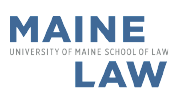Document Type
Book
Publication Date
11-8-2018
Abstract
Recent presidents including Bill Clinton, G. W. Bush, and Barack Obama have refined how environmental law has been enacted and carried out. Under President Trump, the scope of public environmental law will most certainly narrow. It seems likely that the future of environmental law will depend not upon traditional federal command-and-control legislation or executive branch maneuvering, but instead upon activating environmentalism through expanded substantive areas and innovative regulatory techniques that fall outside the existing, traditional norms of environmental law and legal scholarship. This chapter is an attempt to acknowledge this monumental change, recognizing that these barriers to traditional environmental regulation have and will continue to force an expansion in the boundaries of environmental law and legal scholarship, and in our approaches to environmental regulation. Specifically, the chapter suggests the following in response to the lack of new “traditional” environmental law: (1) environmental law will continue to expand as a discipline and scholarly area of inquiry to include new subfields outside the traditional fields of air quality, water quality, and pollution control to attack environmental problems; and (2) environmental law will continue to focus on alternative methods of environmental regulation by expanding regulatory techniques, expanding the notion of what can be considered a regulated entity beyond that of large institutional stationary sources, and – in light of the new presidential administration – moving away from public environmental regulation and toward private environmental governance.
Publication Title
Perspectives on Environmental Law Scholarship: Essays on Purpose, Shape and Direction, ed. Ole W. Pedersen (Cambridge University Press)
Article Number
1108
First Page
195
Last Page
211
Suggested Bluebook Citation
Jason J. Czarnezki & Sarah Schindler, President Trump, the New Chicago School and the Future of Environmental Law and Scholarship in Perspectives on Environmental Law Scholarship: Essays on Purpose, Shape and Direction 195, (Ole W. Pedersen ed., 2018).
Included in
Energy and Utilities Law Commons, Environmental Law Commons, Land Use Law Commons, Natural Resources Law Commons, Public Law and Legal Theory Commons

